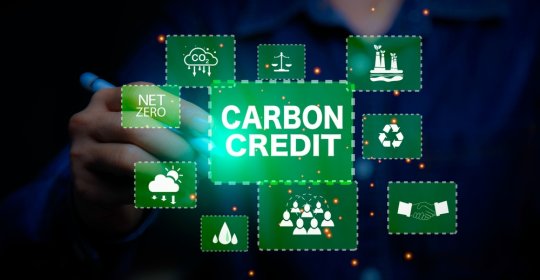🔍 The Truth About Carbon Credits: Are Corporations Really Eco-Friendly?
Picture this: Last Tuesday, I was booking a flight online when a pop-up asked, “Want to offset your 0.84 tonnes of CO₂ emissions for $8.99?”* I clicked “yes,” feeling a warm glow of eco-virtue. But later, I wondered: Did my $9 actually help the planet—or did it just fund corporate green theater? 🤔
🌍 The Carbon Credit Boom: Hope or Hype?
Carbon credits promise a win-win: Companies (or guilt-ridden travelers like me) pay for projects that reduce emissions elsewhere—like planting mangroves 🏝️ or distributing clean cookstoves 🔥. The voluntary carbon market ballooned to $1 billion in 2021 and could hit $100 billion by 2030 19. Sounds amazing, right?
But dig deeper, and cracks appear.
🚨 The Greenwashing Alarm Bells

-
“Cheap Credits, Big Claims”: A 2025 study found 70%+ of carbon offsets cost below $4/tonne—too cheap to fund meaningful change. Worse, low-emission sectors (like finance or tech) use offsets heavily to polish their ESG scores, while high-polluters (oil, utilities) barely bother 1.
-
The Over-Crediting Scandal: Take Myanmar’s clean cookstove project—the first approved under the Paris Agreement’s Article 6.4. It issued 26x more credits than its actual emissions cuts. Why? Outdated methods inflated its impact 4.
-
“Only 16% Real Reductions”: A meta-study of 2,346 projects found just 11-25% of credits from cookstove or forest projects represented actual emission cuts. For context: Buying these credits is like paying for a “gourmet meal” and getting a stale cracker 7.
Table: Carbon Credit Quality by Project Type (Sylvera 2024 Report) 9
| Project Type | % of Retirements (2024) | Quality Trend (BB+ rated) |
|---|---|---|
| Renewables (e.g., wind) | 29% | ⬇️ Low (high over-crediting) |
| REDD+ (Forests) | 29% | ⬆️ Improving |
| Cookstoves | 12% | ⬇️⚠️ High risk |
| Tech-based removal | 0.11% | ⬆️✅ High (but scarce) |
✨ The Other Side: Why Some Companies Do Care
Not all hope is lost. Data shows companies buying credits are:
-
2x more likely to decarbonize year-over-year.
-
3x more likely to set science-based climate targets 11.
Take Microsoft: It invests in high-quality engineered carbon removal ($$$), while slashing operational emissions. Or Disney, aiming for zero waste and net-zero emissions 811.
🔥 My Personal Wake-Up Call

I used to see offsets as a “get-out-of-jail-free card.” Then I read about SF6 gas projects—where factories increased emissions to sell more credits 💸 7. That’s like arsonists selling fire extinguishers.
💡 How to Fix This Mess? Experts Weigh In:
-
Scrap Cheap Credits: Pay $20+/tonne for projects with third-party verification (e.g., Gold Standard). High prices filter out junk 914.
-
Demand “Buffer Pools”: Forest projects should set aside 30-40% extra land as insurance against fires—not today’s tiny 10-15% 14.
-
Regulate, Don’t Abandon: The U.S. and UN are pushing for Article 6 reforms at COP29. Tighter rules could turn credits from greenwash to game-changer 14.
🌱 The Bottom Line?
Carbon credits aren’t evil—but 90% of today’s market is broken. As Lucy Hutyra (BU climate scientist) told me:
“This isn’t about scrapping the system. It’s about making it robust enough to buy us time while we decarbonize everything else.” 14.
So next time you see that “offset your flight” button? Pause. Ask:
-
❓ Is this credit rated BB+ or higher? (Check databases like Sylvera)
-
❓ Does the seller disclose project risks?
-
❓ Is my airline ALSO investing in SAF/sustainable ops?
Real change needs both: Companies slashing emissions first, then using credits for what’s left 🌍✨.

What’s your carbon credit story? Share below! 👇
Sources & Further Reading:
